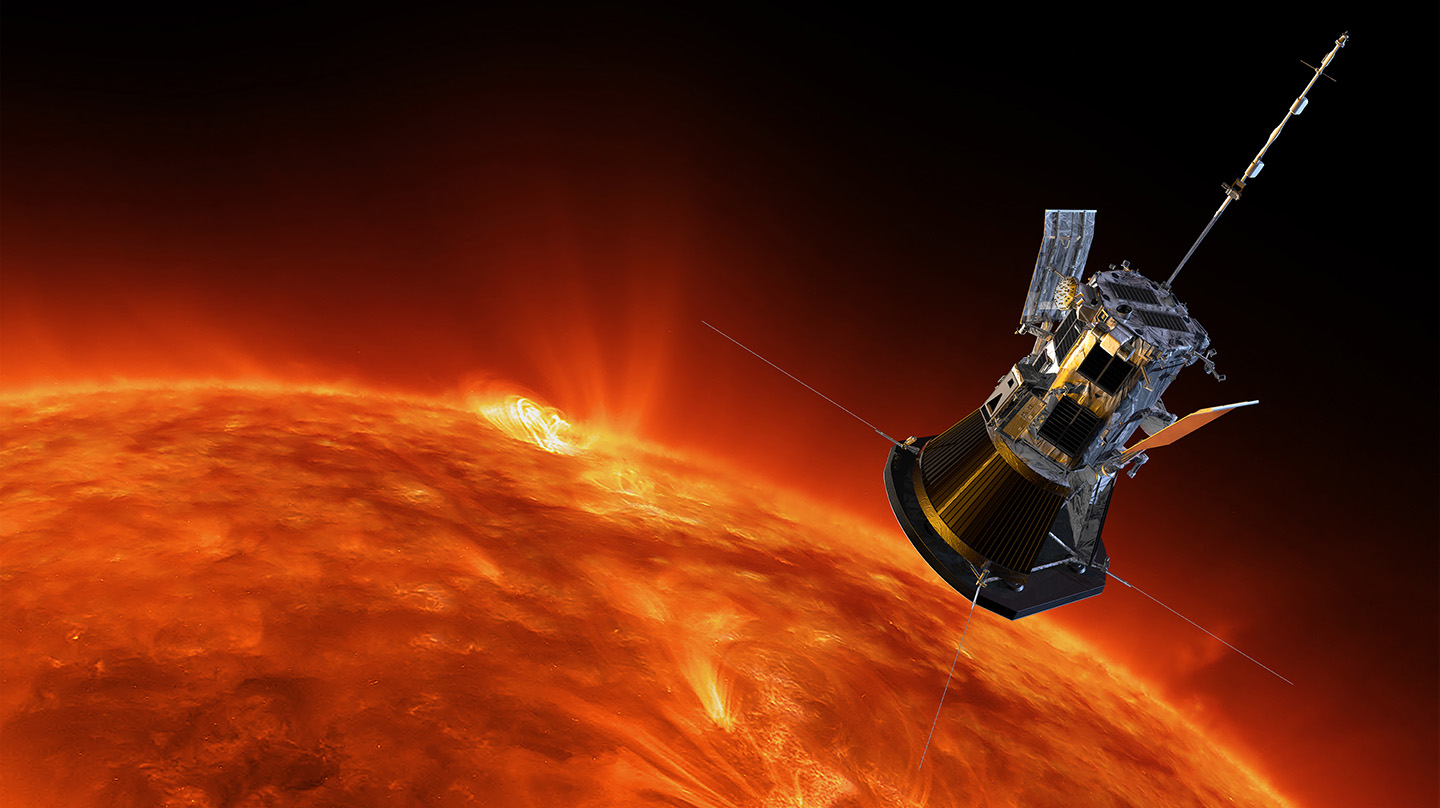News
Parker Solar Probe Makes History With Closest Pass to the Sun
NASA’s mission to “touch” the Sun has confirmed that it survived its record-breaking closest approach to the Sun’s surface on Dec. 24.
Breaking its previous record by flying just 3.8 million miles (around 6.1 million kilometers) above the surface of the Sun, NASA’s Parker Solar Probe hurtled through the solar atmosphere at a blazing 430,000 miles per hour (692,000 kilometers per hour) — faster than any human-made object has ever moved. A beacon tone, received in the mission operations center at the Johns Hopkins Applied Physics Laboratory (APL) late on Dec. 26, confirmed the spacecraft had made it through the encounter safely and is operating normally. APL designed, built and operates the spacecraft from its campus in Laurel, Maryland.

This pass, the first of more to come at this distance, is allowing the spacecraft to conduct unrivaled scientific measurements with the potential to change our understanding of the Sun.
“Getting this close to the Sun is a historic moment in our quest to uncover the mysteries of our nearest star,” said Nicky Fox, associate administrator for NASA’s Science Mission Directorate. “By studying the Sun up close, we can better understand its impacts throughout our solar system, including on the technology we use daily on Earth, as well as learn about the workings of stars across the universe.”
“This accomplishment is a testament to the dedication and innovative spirit of the entire Parker Solar Probe team,” said APL Director Ralph Semmel. “Their incredible technological breakthroughs enabled this amazing mission, and they have delivered critical new insights that are revolutionizing our understanding of heliophysics and space weather.”
Parker Solar Probe has spent the last six years setting up for this moment. Launched in 2018, the spacecraft used seven flybys of Venus to gravitationally direct it ever closer to the Sun. With the last Venus flyby on Nov. 6, the spacecraft reached its optimal orbit, an oval-shaped loop that brings it around the Sun every three months — close enough to study our Sun’s mysterious processes but not too close to become overwhelmed by the Sun’s heat and damaging radiation. The spacecraft will remain in this orbit for the remainder of its primary mission and potentially for many years after that.
“Parker Solar Probe is braving one of the most extreme environments in space and exceeding all expectations,” said Nour Rawafi, project scientist for Parker Solar Probe at APL. “This mission is ushering in a new golden era of space exploration, bringing us closer than ever to unlocking the Sun’s deepest and most enduring mysteries.”
Close to the Sun, the spacecraft relies on a carbon foam shield to protect itself from the intense heat. The shield was designed to reach temperatures of 2,600 degrees Fahrenheit (around 1,430 degrees Celsius) — hot enough to melt steel — while keeping the instruments behind it shaded at a comfortable room temperature. Spacecraft operators expect the shield to have faced temperatures around 1,800 F (980 C) at closest approach.
“It’s monumental to be able to get a spacecraft this close to the Sun,” said John Wirzburger, Parker Solar Probe mission systems engineer at APL. “This is a challenge the space science community has wanted to tackle since 1958, and it spent decades advancing the technology to make it possible.”
By flying through the solar corona, Parker Solar Probe can take measurements that help scientists better understand how the region gets so hot, trace the origin of the solar wind (a constant flow of material escaping the Sun), and discover how energetic particles are accelerated to half the speed of light.
“The data is so important for the science community because it gives us another vantage point,” said Kelly Korreck, a program scientist at NASA Headquarters and heliophysicist who worked on one of the mission’s instruments. “By getting first-hand accounts of what’s happening in the solar atmosphere, Parker Solar Probe has revolutionized our understanding of the Sun.”



